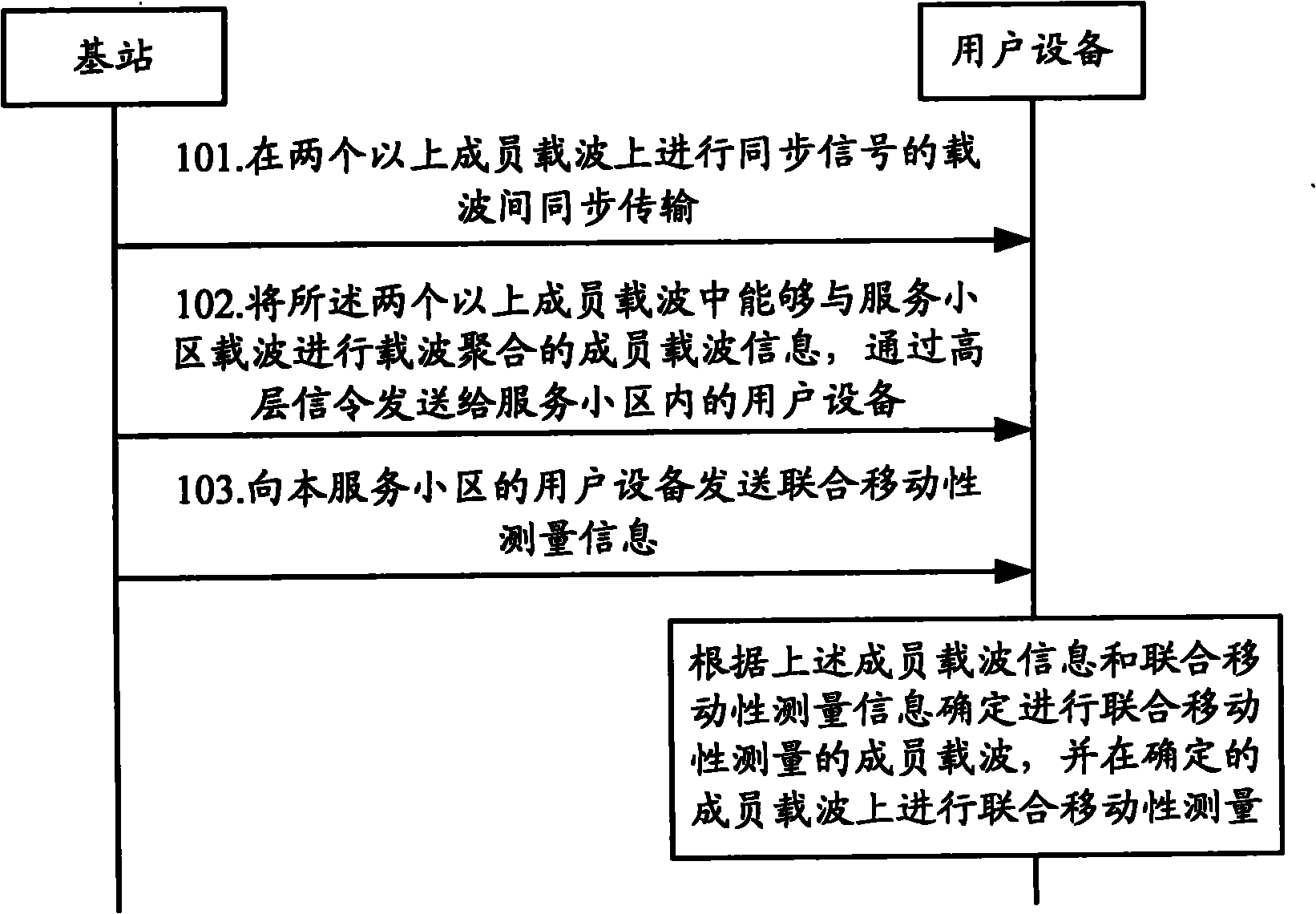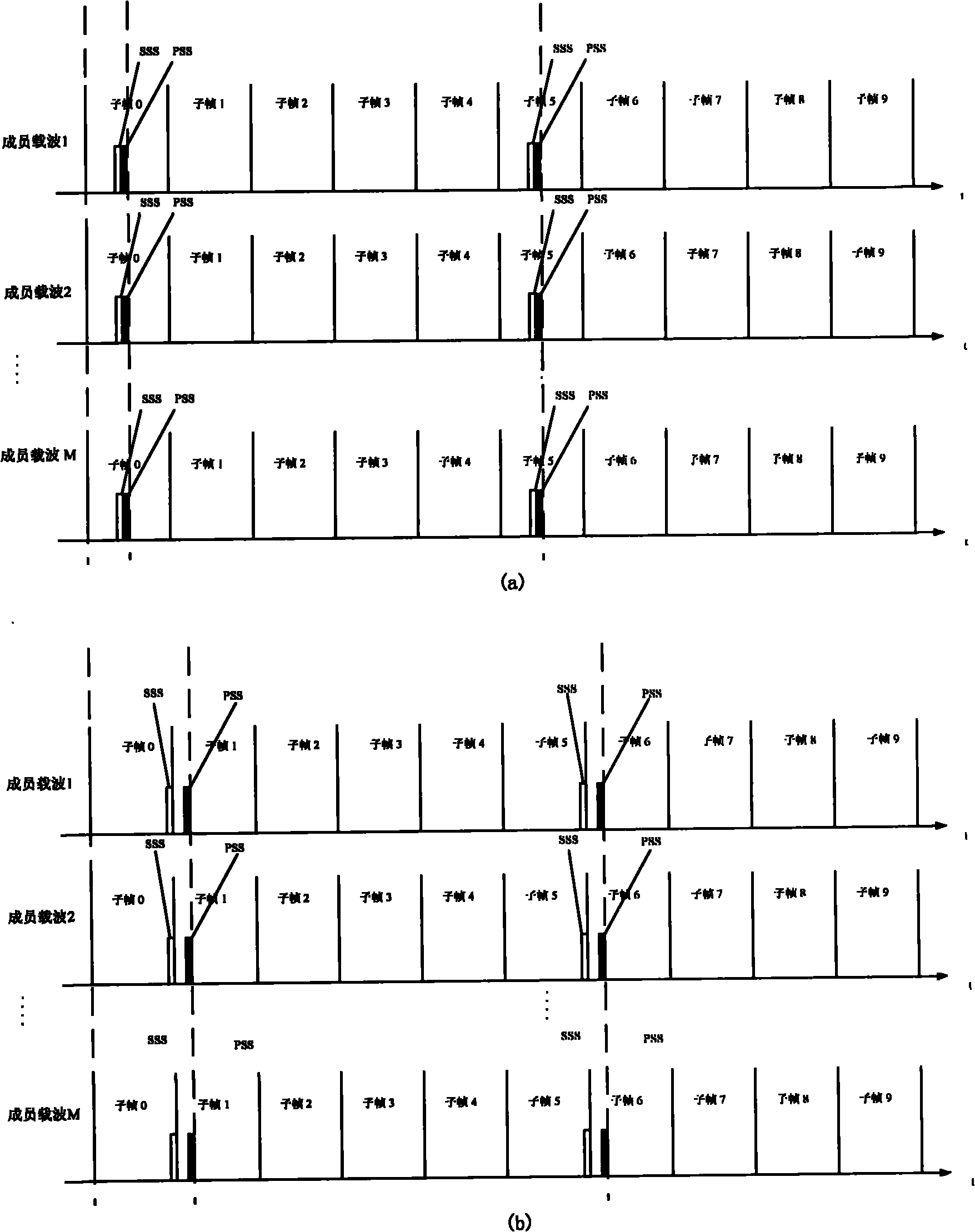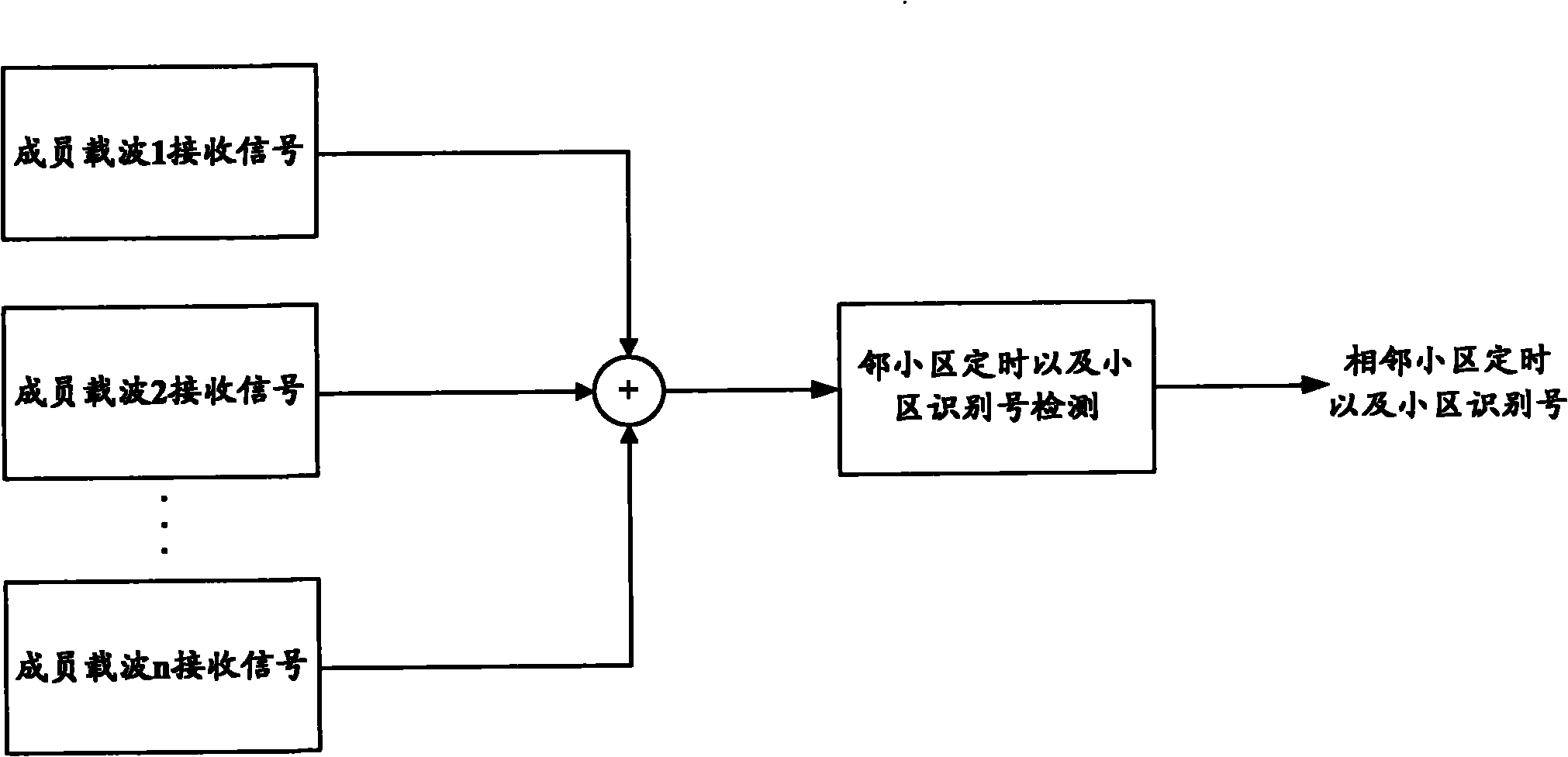Mobility cell measurement method for long term evolution-advanced (LTE-A) system
A LTE-A and cell measurement technology, applied in the field of mobile communications, can solve the problems of long time-consuming mobility measurement and high power consumption, and achieve the effects of accelerating speed, reducing power consumption, and improving measurement signal performance
- Summary
- Abstract
- Description
- Claims
- Application Information
AI Technical Summary
Problems solved by technology
Method used
Image
Examples
Embodiment 1
[0077] Carrier aggregation adopts deployment strategy 1, that is, in addition to component carrier k, there are other M-1 component carriers with the same coverage, and these M component carriers correspond to antennas at the same location and use the same PCI. A certain UE is within the coverage area, and the component carrier k is configured as the primary component carrier (PCC) of the UE, that is, the cell determined by the PCC and the PCI is the serving cell of the UE.
[0078] According to the method of the invention:
[0079] The base stations to which the M component carriers belong transmit the PSS and SSS in a synchronous manner on the M component carriers, and the PSS and SSS sequences transmitted on the M component carriers are completely the same.
[0080] The serving cell base station of the UE sends the other M-1 component carrier information, that is, the component carrier information capable of performing carrier aggregation with the PCC, to the UE through hig...
Embodiment 2
[0092] Carrier aggregation adopts deployment strategy 2, that is, in addition to component carrier k, there are other M-1 component carriers. These M component carriers correspond to antennas in the same position and in the same direction, and use the same PCI, but these M The coverage areas of the cells covered by the component carriers are different. A certain UE is within the coverage of a cell of component carrier k, wherein component carrier k is configured as the primary component carrier (PCC) of the UE, that is, the cell determined by the PCC and the PCI is the serving cell of the UE.
[0093] According to the method of the invention:
[0094] The base stations to which the M component carriers belong transmit the PSS and SSS in a synchronous manner on the M component carriers, and the PSS and SSS sequences transmitted on the M component carriers are completely the same.
[0095] The serving cell base station of the UE sends the other M-1 component carrier information...
Embodiment 3
[0107] Carrier aggregation adopts deployment strategy 1 or 2. In addition to component carrier k, there are other M-1 component carriers whose coverage areas may be the same or different. The M component carriers correspond to antennas at the same position and in the same direction, but adopt different PCIs. A certain UE is within the coverage area, and component carrier k is configured as the PCC of the UE.
[0108] According to the method of the invention:
[0109] The base stations to which the M component carriers belong transmit the PSS and SSS in a synchronous manner on the M component carriers, and the PSS and SSS sequences transmitted on the M component carriers are different.
[0110] The serving cell base station of the UE sends the other M-1 component carrier information, that is, the component carrier information capable of performing carrier aggregation with the PCC, to the UE through high-layer signaling. In this way, the UE can know which component carriers ca...
PUM
 Login to View More
Login to View More Abstract
Description
Claims
Application Information
 Login to View More
Login to View More - Generate Ideas
- Intellectual Property
- Life Sciences
- Materials
- Tech Scout
- Unparalleled Data Quality
- Higher Quality Content
- 60% Fewer Hallucinations
Browse by: Latest US Patents, China's latest patents, Technical Efficacy Thesaurus, Application Domain, Technology Topic, Popular Technical Reports.
© 2025 PatSnap. All rights reserved.Legal|Privacy policy|Modern Slavery Act Transparency Statement|Sitemap|About US| Contact US: help@patsnap.com



